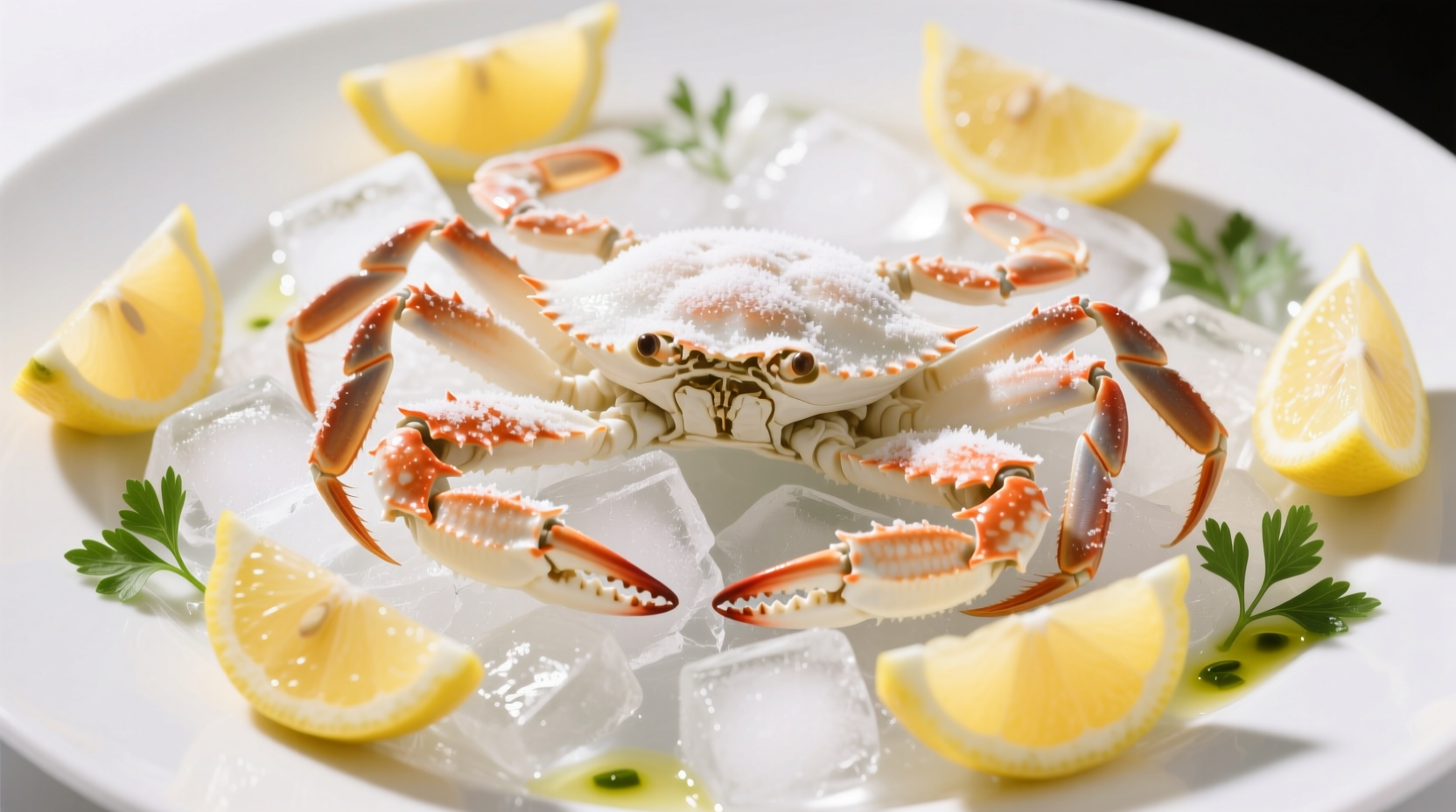When you take your first bite of fresh crab, you're greeted with a clean, oceanic sweetness that distinguishes it from other seafood. Unlike fish with stronger flavors, crab offers a refined taste experience that's neither overpowering nor bland. The natural sugars in crab meat contribute to its signature sweetness, while the marine environment imparts subtle briny notes that enhance rather than dominate the flavor profile.
Sensory Characteristics of Fresh Crab
Understanding crab's flavor requires examining multiple sensory dimensions:
- Taste: Primarily sweet with delicate briny undertones and occasional nutty hints depending on the species
- Texture: Tender yet firm with distinct flaky layers that separate cleanly when cooked properly
- Aroma: Clean, fresh ocean scent without any ammonia notes (which indicate reduced freshness)
- Mouthfeel: Juicy with a satisfying resistance that gives way to delicate flaking
Food scientists at the University of California Sea Grant program have identified specific amino acids and nucleotides in crab meat that create its unique umami-sweet profile. These compounds—particularly glycine and alanine—contribute significantly to crab's characteristic sweetness that many diners find irresistible.

Crab Variety Flavor Comparison
Different crab species offer distinctive taste experiences. Here's how popular varieties compare:
| Crab Variety | Flavor Profile | Texture | Best Preparation Method |
|---|---|---|---|
| Blue Crab | Sweet with pronounced nutty notes | Fine, delicate flakes | Steamed with minimal seasoning |
| Dungeness | Clean, mild sweetness with subtle brininess | Firm yet tender chunks | Steamed or boiled with vinegar |
| King Crab | Rich sweetness with slight saltiness | Large, meaty flakes | Steamed simply with lemon |
| Snow Crab | Delicate sweetness with mild ocean notes | Long, slender strands | Lightly steamed or chilled |
Factors That Transform Crab Flavor
Several critical elements determine whether your crab experience delights or disappoints:
Freshness: The Non-Negotiable Factor
According to NOAA Fisheries guidelines, fresh crab should have no ammonia odor whatsoever. As crab deteriorates, enzymatic processes create ammonia compounds that completely overwhelm the natural sweetness. Live crabs that have been properly handled and cooked within hours of harvest deliver the purest flavor experience. Pre-cooked crab should be consumed within two days for optimal taste.
Cooking Method Matters
How you prepare crab dramatically affects its final flavor:
- Steaming: Preserves natural sweetness better than boiling, as less flavor leaches into cooking liquid
- Boiling: Can enhance flavor when using court bouillon (aromatic broth) but risks waterlogging if overdone
- Grilling: Adds smoky notes that complement crab's sweetness but requires careful timing to prevent drying
- Raw preparations: Only suitable for extremely fresh, sashimi-grade crab (like certain snow crab varieties)
Maximizing Your Crab Flavor Experience
Professional chefs recommend these techniques for optimal crab enjoyment:
- Seasoning strategy: Use minimal seasoning—lemon wedges, clarified butter, and perhaps a touch of Old Bay seasoning allow the natural sweetness to shine
- Temperature matters: Serve crab slightly warm (not hot) to preserve delicate flavor compounds that dissipate at high temperatures
- Pairing wisdom: Complement crab with crisp white wines like Sauvignon Blanc or unoaked Chardonnay that won't overpower its subtle notes
- Timing is everything: Enjoy crab within 15 minutes of cooking for peak flavor and texture
Common Crab Flavor Misconceptions
Several myths persist about crab's taste profile:
- Misconception: All crabs taste essentially the same
Reality: Flavor differences between species can be as distinct as chicken versus duck - Misconception: Crab should have a strong "fishy" taste
Reality: Fresh crab has clean, sweet notes without any fishiness—ammonia or fishy flavors indicate reduced freshness - Misconception: The shell color determines flavor
Reality: Shell color relates to species and environment, not taste—blue crabs can have brownish shells yet maintain their signature sweet flavor
Crab vs. Other Shellfish: A Flavor Comparison
Understanding crab's unique position among shellfish helps contextualize its flavor:
- Compared to lobster: Crab generally offers a sweeter, more delicate flavor while lobster has richer, buttery notes
- Compared to shrimp: Crab has more complex sweetness with less pronounced iodine notes than some shrimp varieties
- Compared to crawfish: Crab provides cleaner sweetness while crawfish often has earthier, more mineral notes
When properly prepared and exceptionally fresh, crab delivers a culinary experience that combines the best elements of sweet, briny, and delicate—a flavor profile that has made it a prized seafood worldwide for centuries. The key to enjoying crab at its best lies in understanding the variety you're eating, ensuring maximum freshness, and using preparation methods that enhance rather than mask its natural qualities.











 浙公网安备
33010002000092号
浙公网安备
33010002000092号 浙B2-20120091-4
浙B2-20120091-4